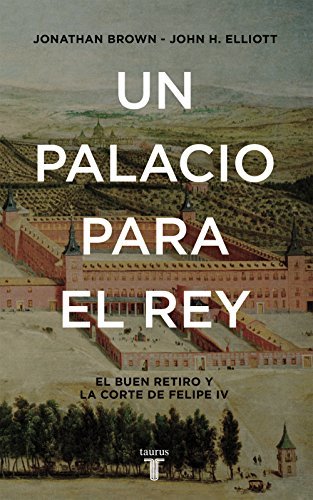
Taurus reedita esta obra sobre la construcción del palacio del Buen Retiro firmada por dos de los más prestigiosos hispanistas del Jonathan Brown y sir John Elliot. Una obra profusamente ilustrada en la que se entremezclan el arte y la política del siglo XVII y el Palacio pasa a ser un escaparate del Siglo de Oro español. El palacio del Buen Retiro, un palacio de recreo y de descanso real, fue construido en las afueras de Madrid durante la década de 1630. Gracias a su espléndida colección de cuadros de Velázquez y de otros artistas de la época, el palacio se convirtió en escaparate del arte y de la cultura del Siglo de Oro español. Un palacio para el rey, publicado por primera vez en 1980 con excelentes críticas, fue un libro pionero en el que se proporcionaba una visión global de la historia de la construcción, la decoración y los usos de un gran palacio real, a la vez que se subrayaba la relación entre el arte y la política en un momento crítico de la historia europea. La publicación de esta obra cobra hoy mayor relevancia por el proyecto de ampliación del Museo del Prado, que incluye la restauración del Salón de Reinos para que recupere su aspecto original, tal como se refleja en este libro. En la rivalidad entre los monarcas del siglo XVII «la cultura, el coleccionismo, el mecenazgo, valían tanto como los ejércitos». Reseñ «Un acontecimiento cultural de primer orden.» Francisco Calvo Serraller, El País
Authors

Sir John Huxtable Elliott, FBA, was an English historian, Regius Professor Emeritus at the University of Oxford and Honorary Fellow of Oriel College, Oxford and Trinity College, Cambridge. He published under the name J.H. Elliott. Elliott was educated at Eton College and Trinity College, Cambridge. He was an assistant lecturer at Cambridge University from 1957 to 1962 and Lecturer in History from 1962 until 1967, and was subsequently Professor of History at King's College, London between 1968 and 1973. In 1972 he was elected to the Fellowship of the British Academy. Elliott was Professor in the School of Historical Studies at the Institute for Advanced Study, Princeton, New Jersey from 1973 to 1990, and was Regius Professor of Modern History, Oxford between 1990 and 1997. He held honorary doctorates from the Autonomous University of Madrid (1983), the universities Genoa (1992), Portsmouth (1993), Barcelona (1994), Warwick (1995), Brown University (1996), Valencia (1998), Lleida (1999), Complutense University of Madrid (2003), College of William & Mary (2005), London (2007), Charles III University of Madrid (2008), Seville (2011), Alcalá (2012), and Cambridge (2013). Elliott is a Fellow of the Rothermere American Institute, University of Oxford, of whose Founding Council he was also a member. Elliott was knighted in the 1994 New Year Honours for services to history and was decorated with Commander of Isabella the Catholic in 1987, the Grand Cross of Alfonso the Wise in 1988, the Grand Cross of Isabella the Catholic in 1996, and the Creu de Sant Jordi in 1999. An eminent Hispanist, he was given the Prince of Asturias Prize in 1996 for his contributions to the Social sciences. For his outstanding contributions to the history of Spain and the Spanish Empire in the early modern period, Elliott was awarded the Balzan Prize for History, 1500–1800, in 1999. His studies of the Iberian Peninsula and the Spanish Empire helped the understanding of the problems confronting 16th- and 17th-century Spain, and the attempts of its leaders to avert its decline. He is considered, together with Raymond Carr and Angus Mackay, a major figure in developing Spanish historiography.